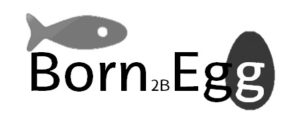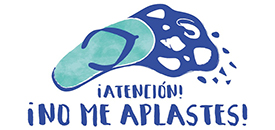Research projects / Contracts
H2020 projects
National Projects and Strategic actions
 Population structure of the catadromous thicklip grey mulet (Born2bEgg)
Population structure of the catadromous thicklip grey mulet (Born2bEgg)
From: 2019 To: 2022
PI: Ibon Cancio and Maren Ortiz-Zarragoitia
Objective:
- To describe the structure of mullet population in the Basque Coast.
- To follow-up the prevalence of intersex mullets in the polluted localities of the Basque Coast.
- To evaluate the effect of pollution on mullet fertilization.
- To molecularly characterize gender determination.
 SEAdimentox projet
SEAdimentox projet
New insights into the dormant ecotoxicological threats posed by chronically polluted estuarine sediments
From: December 2018 To: December 2021
PI: Manu Soto and Ionan Marigómez
Objectives:
- To ensure the implementation of management procedures in order to address and handle all project issues.
- To understand the fluxes of contaminants between water column, sediments and test species (water-sediment-biota interactions) to decipher the environmental fate of removed pollutants
- To develop robust, accurate and reliable sediment toxicity bioassays
- To assess the consequences of contaminated dredged sediment deployment in soils
- To disseminate knowledge, promote public awareness and enhance social perception as regards environmental protection and its research
ENZIMA project
From: December 2016 To: December 2019
PI: Begoña Ayo
Objective:
The ENZYME project arises from the need to acquire predictive power on the functioning of extracellular enzymes in future scenarios of global warming. It aims: i) to detect the temperature sensitivity of the hydrolytic activity and affinity in a set of model extracellular enzymes, which hydrolyze organic compounds rich in carbon, nitrogen and phosphorus in coastal waters, ii) to analyze how the affinity of the produced enzymes can regulate the final hydrolytic activity, iii) to assess the possible disturbances of the C: N, C: P and N: P stoichiometric ratios in the generated organic material, and iv) to identify links between the enzymatic activities and fundamental properties of the ecosystem ,such as seawater temperature, the composition of the bacterial community, primary producers, inorganic nutrients and dissolved organic material.
 Exposome assessment of emerging contaminants in the aquatic environment (AQUASOME)
Exposome assessment of emerging contaminants in the aquatic environment (AQUASOME)
From: 2018 To: 2020
PI: Nestor Etxebarria Loizate
Objective:
Aquasome is a multi and inter-disciplinary project aimed at studying in aquatic media the presence of emerging contaminants, including microplastics and associated chemicals, and elucidating the exposure pathways to assess their impact on marine ecosystems and food webs and, eventually, on human health. The project is focused on the development of screening methods based on
the use of high throughput methodologies for exploring the occurrence of emerging contaminants linked to human exposure and lifestyle while elucidating the most toxic fractions according to a set of in-vitro and in-vivo bioassays and their mechanisms of toxicity action. In fact, this project for the first time tackles the exposome to emerging contaminants holistically by integration of effect directed analysis (EDA), physiologically relevant bioaccessibility tests (PBETs) for seafood commodities, in-vitro cytotoxicity testing, metabolomics and wastewaterbased epidemiology (WBE) assays.
Desarrollo de un sistema avanzado y sostenible para la cría en cautividad del Múgil (AKURA)
From: 2018 – 2019
PI: Javi Etxebarria (Gaiker), Manu Soto (PiE-UPV/EHU)
Entity: Basque government. Dep. Economic Development and Infrastructure. Fisheries and Aquaculture Directorate.
Global data assimilation system with increased resolution over the Iberian Peninsula
From: 2017 – 2019
PI: Jon Saenz
Entity: MINECO
Spatio-temporal regulation and activation dynamics of oncoproteins in a 3D environment
From: 2016 – 2019
PI: Banafshe Larijani
Entity: MINECO
Contracts
Company: PETRONOR
Nº de Contrato C2002/0165.
Study: Study of the ecological status of the discharge in Punta Lucero
Contract: yearly since 2000
IP: José María Gorostiaga






